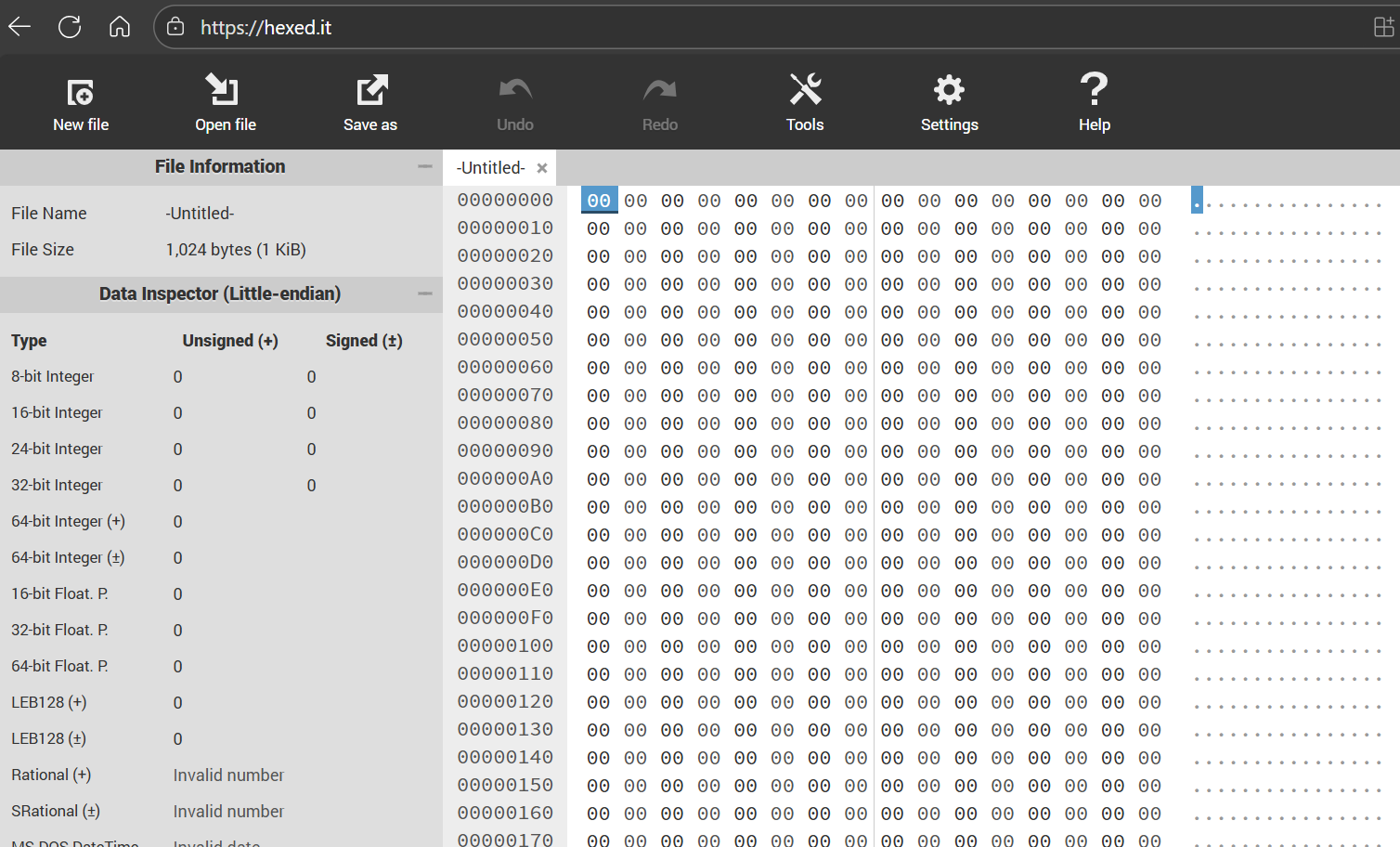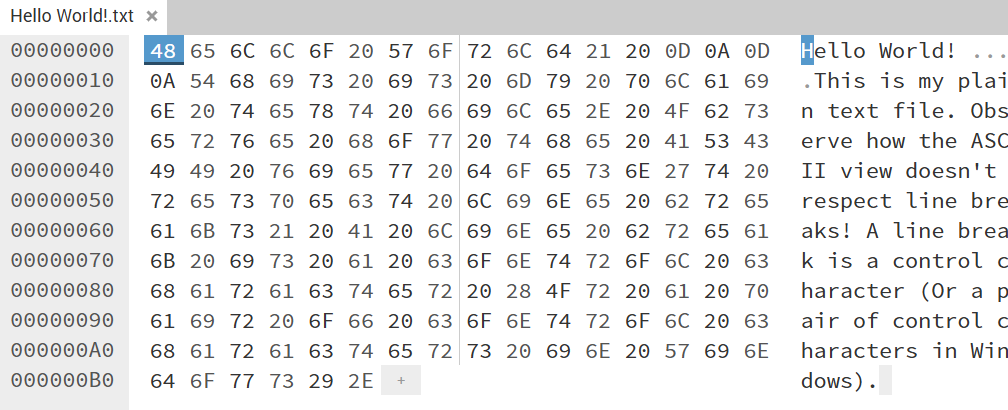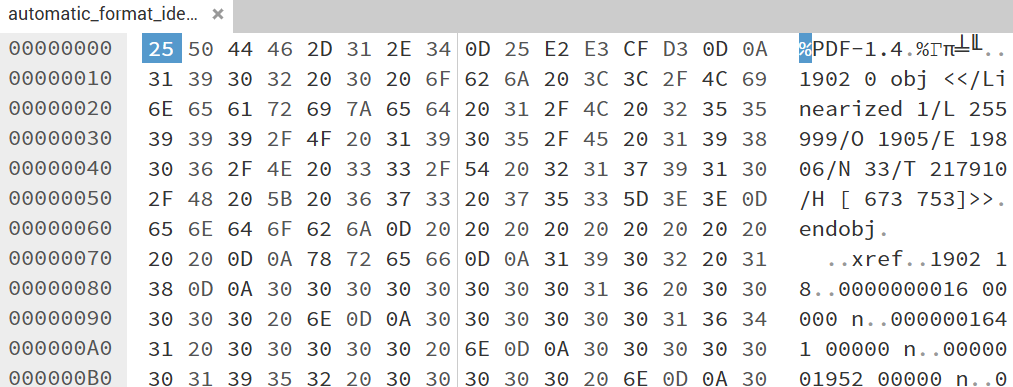Using a hex editor
Last updated on 2025-11-02 | Edit this page
Estimated time: 10 minutes
Overview
Questions
- Introducing the Hex Editor
- What is a Hex Editor?
- Why use a Hex Editor?
- How do I understand the layout
- How can I keep my data safe when using a hex editor
- How do I use a Hex Editor?
- Can I use a hex editor now?
Objectives
- Get everybody onto a Hex Editor
- Understand how they work
- Understand what they’re used for
- Understand what I’m seeing
- Highlight and reinforce good, safe practice
- Hands-on demo
- Reinforce by doing
Introducing HexEd.it
HexEd.it is a web-based hex-editor and should prove incredibly useful in your future signature development adventures!
- Find it at: HexEd.it

screenshot of hexed.it’s user interface.
Make a note to participants that keeping a separate HexEd.it tab open will be beneficial throughout the remainder of this workshop.
What is a Hex Editor?
- Bytecode representation of digital file
- Typically displays Hexadecimal, and ASCII/ANSI representations of data
- Enables direct editing of data values
Why use a Hex Editor?
- File forensics
- Reverse engineering
- Understanding file formats at a low-level
- Cheating in video games!
How do I understand the layout?
- Offset values show the position of data within the file
- Offsets also use hexadecimal notation, and start at offset 0 (or 0x00)
- The byte at Offset 0x00 is the first byte; Offset 0x0A is the 11th byte; Offset 0x4000 is the 16,385th byte!
- Hexadecimal view shows binary data represented as bytes (8 bits per byte)
- ASCII view shows text interpretation of data
- Text on ASCII side may appear ‘scrambled’ - this suggests binary encoded data
- Some Hex Editors (like this one) can suggest different interpretations of blocks of data
- Some Hex Editors allow for text interpretations (character sets) other than ASCII, such as EBCDIC
Safety first!
- A Hex Editor allows for the direct manipulation of data within digital files (note, this isn’t really any different from Notepad in this regard)
- Possible to make mistakes and accidentally save over your data
- Therefore: Always work on a copy of your data, never the original data
Using the Hex Editor
Demoing ‘Hello World!’ text file

Hello World! Plain-text file.

Hello World! Plain-text file in
hexadecimal.
Sample file
You can take the sample file and view it in the hex editor for yourself.
-
Hello World!.txt (MD5:
44d63b2ec6c79739ce994597e1d66d84)
Demoing PDF

A small part of a PDF file shown in a hex
editor.
Your turn
- Drag a file of your choosing into your Hex Editor
- Tell us what you’ve observed!
Suitable workshop files can also be found on the front page of this site.
- Recommend HexEd.it as an online tool for the session. Mention HxD, others
- ‘Bytecode’ representation of file - both Hexadecimal and ‘ASCII’, with 0x00-1F control characters usually represented as periods (dots) or spaces
- File Forensics, reverse engineering, understanding file formats at a low-level. My first exposure to Hex Editors was editing the save files of video games to give me extra lives or gold!
- Understanding offsets, Hex-view, limitations of ASCII view
- Encourage ‘Safety First’ - it’s called an ‘editor’ for a reason, so to avoid the risk of corrupting your own originals, always work with a copy of your original files
- Drag a Plain Text file everybody has access to to demonstrate ASCII representation. Drag a further file (PDF?) to demonstrate mixture of binary and ASCII data- with reference to PRONOM, highlight magic number, reinforcement of offset meaning. Demonstrate how easy it is to change data, to reinforce safety first aspects!
- Drag a file of your choosing into the hex editor - raise your hand if you’d like to share any observations
